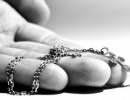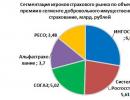How to make a bolster for pchak. Uzbek knife: what it should be
Talking about Uzbekistan, I cannot help but talk about the Uzbek national knife - pchak. Pchak or Pechak (Uzbek Pichoq - “knife”) is the national knife of the Central Asian peoples - Uzbeks and Uyghurs. Traditionally, it has a straight, wide carbon steel blade of wedge-shaped cross-section with one-sided sharpening, sometimes with a narrow fuller along the butt. A thin, round handle is attached at the level of the butt, slightly widens towards the head, and sometimes ends in a beak-shaped pommel. It can be made of horn, bone or wood, or inlaid with colored stone. The pchak is worn in a wide, straight leather sheath. Distributed throughout Central Asia with slight differences in ornamentation and proportions.
In Uzbekistan, they are made mainly in the eastern and central parts of the country - in Khiva there were no such knives anymore, only imported ones. In Bukhara, in the very center of the city, there are several workshops where pchaks are made, but the prices here are somehow prohibitive, apparently calculated for tourists who come for the day.
Tools in the workshop 
The main blank for a knife is a car valve, but it is also made from some cheap stainless steel, but it is carbon steel knives that are most valued. There is better steel, there is Damascus, but the prices for such knives are appropriate. 

After forging, the knives receive a handle made of fiberglass, plexiglass, metal, horn, bone, and then are roughly sharpened on a sharpening wheel 
After polishing, designs or inscriptions are often applied to them. 
I still don’t understand why the knife is covered with a thin layer of hot paraffin (?) 
Let him cool down 

Apparently, so that later a sketch is drawn with a special brush, which in the future will be a drawing or an inscription 
The final sharpening is done on such a sharpening stone 
Sometimes, at the request of the client, a dedicatory inscription is applied 
Workshop 
Well, the knives themselves 

I bought myself this one at the market in Tashkent - an excellent knife to use on the farm! Sharpened by a fork 
Depending on national traditions, geographical location and culinary preferences, each nation and nationality has its own knife, different from others. Uzbek, Finnish, Tajik, Indian - each of them is different. A Russian knife implies its use: on a hunt, on a camping trip, in close combat, for self-defense. The Japanese knife is associated with the samurai sword, the sharpness of which has no equal blades in the world. French cleavers resemble a saber with a handle. Knives are especially popular among Central Asian peoples.
Uzbek knife - pchak
According to various sources, the pchak knife appeared among the peoples of Central Asia in the 14th-15th century. To this day, its form has not changed. The name of the blade comes from a similar word in the Uzbek language “pechak”. Literally translated as “knife”. Such forms of knife are used throughout Central Asian territory with minor changes regarding proportions and special decorations.
The width of the blade is within 5 centimeters, while its length is no more than 22 centimeters. The wedge-shaped cross-section gradually decreases from the butt to the blade. The thickness of the knife, which is up to five millimeters near the handle, decreases closer to the tip of the blade. Excellent cutting qualities of the knife are achieved due to descents different shapes: from straight to curved. The Uzbek knife pchak, the photo perfectly emphasizes its beauty, has excellent balance.
Uzbek knives in the 20-21 centuries
In the 20th century, an Uzbek knife self made on European territory could only be seen in the private collections of connoisseurs of Central Asian art. Very often they were brought home or to close friends after a tourist trip as a beautiful souvenir. Uzbek knives (the photo illustrates the beauty and large selection) were industrially manufactured only in the city of Chust, which is located in Uzbekistan.

Today, Uzbek knives are made almost by hand. The city of Shahrikhan, which is located in the Andijan region, is famous for the craftsmen who make the Uzbek knife pchak. There is an area in this city where several generations of blacksmiths and cutlers live and work. There are also knife makers in other parts of the country, but their work is not as well known. Designer knives are signed with branded emblems with the obligatory addition of stars and a crescent to emphasize the Islamic religion.
Types of pchak knives
The Uzbek knife is used in economic life, as well as in the kitchen. Considering different variants design of a sharp end, there are several forms of pchak knives:
- “kaike” blade - the tip is raised to a height of up to eight millimeters - traditional handmade Uzbek knives;
- “tugri” blade - the end of the blade is sharp, the back of the knife is straight;
- “tolbarga” blade - another name for willow leaf, the blade of the knife is slightly lowered, which is practical when cutting up animal carcasses;

- “Kazakh” blade - there is a depression on the blade, not far from its sharp part, and the sharp end of the knife is above the butt line; a knife is used to work with fish;
- blade "kushmalak" - distinctive feature is the presence of a double lobe along the spine.
The sizes of an Uzbek knife are:
- small (chirchik) - less than fourteen centimeters;
- ordinary (sharkhon) - up to seventeen centimeters;
- large (cow cutter) - up to twenty-five centimeters.
Finishing and design of Uzbek knives
Uzbek handmade knives are masterpieces of the craftsman. Each knife is made in a single copy. It goes through all stages: steel processing, hardening, finishing and sharpening. The craftsman applies ornaments to the handle and blade. Expensive knives are decorated not only with national designs. Here they add a family sign, add their own inscriptions, the “islimi” floral ornament, etc. The more carefully each part of the applied ornament is made, the more valuable the Uzbek knife turns out to be.

The handle is made of apricot, plane tree, plexiglass, and parts of bones and horns are added. Often the handle is made from soldered sheet metal. The shank of the blade coincides with the shape of the handle and, expanding at the bottom, ends with a bend in the idea of a hook. If the handle is made of wood or bone, then it is not decorated. If plexiglass was used, then it is supplemented with colored inclusions and wire. The handle, made of horn, is decorated with rhinestones and mother-of-pearl. The metal handle is decorated with engraving and rhinestones against a background of floral patterns.
The curve at the bottom of the knife, or pommel, completes its design. It is made in the shape of a hook to hold the handle Uzbek knife it was convenient. There is always a recess on the bottom of the handle for convenient placement of the little finger. The pommel is made of hollow horn or special metal inserts.
Sheath for Uzbek knife
For an Uzbek knife, the sheath is considered a mandatory element. The craftsmen used leather or thick fabric. The knife is located deep in the sheath, which does not require an additional lock. Inside the scabbard there are wooden inserts that protect them from being cut from the inside. National Uzbek knives are worn on the left side of the belt. To do this, add a wide loop to the sheath.
If the case is made of fabric, then it is decorated with national embroidery. The leather sheath was decorated with brass and copper inserts. On black leather, craftsmen place a multi-colored pattern in a traditional style. It is not uncommon to see wooden cases.
Storage and care rules

The blade of the Uzbek knife was forged from carbon steel. Previously, until the twentieth century, weapons that had fallen into disrepair or imported pieces of iron from other countries were used for this purpose. The hardness of the blade should be from 50 to 56 Rockwell units. Given the low hardness of the material, the owner of the knife always sharpens the blade. To do this, it is not necessary to use special sharpening stones. The soft material can be easily sharpened using a stone or reverse side bowls.
Exist general rules knife care:
- Sharpening of steel must be carried out from the butt to zero. The use of this type of blade sharpening allows you to cut very thin slices of food.
- It is important to remember that mild steel sharpens well when using ceramic, and may bend or become dull when cutting hard foods or bones.
- Carbon steel is quite porous. After use, the knife must be immediately rinsed and wiped dry.
- If rust appears on the blade of an Uzbek knife, you can get rid of it using mild cleaning agents or sand.
Uzbek knives should be stored, after wiping them, on a wooden knife stand. Their location in a suspended state is also welcome.
Uzbek kitchen knives

To work in the kitchen you need to have several types of Uzbek knives. Small ones are convenient for peeling fruits and vegetables. A medium-sized one will easily cut and finely chop vegetables. Large Uzbek kitchen knives are used to work with meat. The thin curved blade can be used to cut fish perfectly.
The Uzbek knife pchak can serve not only in the kitchen, but also be a wonderful gift. They believe that such a gift is from best friend able to protect from ill-wishers. A knife placed under a baby's pillow protects the health of the baby and mother, attracts wealth and prosperity. Image of an Uzbek knife in embroidered items, on forged items, on ceramic products protects owners from all kinds of misfortunes and troubles.
Talking about Uzbekistan, I cannot help but talk about the Uzbek national knife - pchak. Pchak or Pechak (Uzbek Pichoq - “knife”) is the national knife of the Central Asian peoples - Uzbeks and Uyghurs. Traditionally, it has a straight, wide carbon steel blade of wedge-shaped cross-section with one-sided sharpening, sometimes with a narrow fuller along the butt. A thin, round handle is attached at the level of the butt, slightly widens towards the head, and sometimes ends in a beak-shaped pommel. It can be made of horn, bone or wood, or inlaid with colored stone. The pchak is worn in a wide, straight leather sheath. Distributed throughout Central Asia with slight differences in ornamentation and proportions.
In Uzbekistan, they are made mainly in the eastern and central parts of the country - in Khiva there were no such knives anymore, only imported ones. In Bukhara, in the very center of the city, there are several workshops where pchaks are made, but the prices here are somehow prohibitive, apparently calculated for tourists who come for the day.
Tools in the workshop 
The main blank for a knife is a car valve, but it is also made from some cheap stainless steel, but it is carbon steel knives that are most valued. There is better steel, there is Damascus, but the prices for such knives are appropriate. 

After forging, the knives receive a handle made of fiberglass, plexiglass, metal, horn, bone, and then are roughly sharpened on a sharpening wheel 
After polishing, designs or inscriptions are often applied to them. 
I still don’t understand why the knife is covered with a thin layer of hot paraffin (?) 
Let him cool down 

Apparently, so that later a sketch is drawn with a special brush, which in the future will be a drawing or an inscription 
The final sharpening is done on such a sharpening stone 
Sometimes, at the request of the client, a dedicatory inscription is applied 
Workshop 
Well, the knives themselves 

I bought myself this one at the market in Tashkent - an excellent knife to use on the farm! Sharpened by a fork 
Of great interest to collectors is the Uzbek knife, which is distinguished by its versatility in use, has a richly decorated handle and good quality manufacturing. Such a gorgeous blade will become a great gift for everyone who appreciates edged weapons. Today, many varieties of pchak are known - from knives for use in the kitchen, to richly decorated models for collectors.
Description of the knife
The Uzbek knife, or pchak as it is also called, is a traditional weapon of the Central Asian peoples, with a wide blade of an unusual shape and one-sided sharpening. Such blades are made of high-strength carbon steel; the handle can be made of wood, metal, horn or bones of exotic animals. The pchak is worn in a straight, wide leather sheath and is popular in the countries of Central Asia, where there are numerous variations of this weapon, differing in the proportion of the blade and the ornament.
The features of the blade include the following:
- Unusual shape blades.
- One-sided sharpening.
- Wooden and bone handle.
- Richly decorated handle.
The length of the Uzbek pchak is usually 12−27 cm. The thickness of the handle is 6−7 mm. The cross-section of the blade usually narrows from the butt to the blade. The original geometry of the blade allows you to cut food with ease, while the blade is perfectly balanced. It has optimal weight characteristics, fits comfortably in the hand, and thanks to the extended handle, it is suitable for people with large and medium-sized palms.
History of creation
Uzbek pchak is a modified Asian knife, which was known back in the 4th century BC. Subsequently, several varieties of such weapons became widespread, the most popular of which was the pchak. This blade is extremely effective, versatile in use and at the same time has an attractive appearance. With equal success, this weapon can be used both in everyday life in the kitchen and considered as a combat weapon.
According to one version, such a weapon with an original blade shape appeared during the conquest Russian Empire Uzbekistan and all of Central Asia. The new authorities, fearing unrest and riots among the local population, prohibited them from various types of bladed weapons. The unusual shape of the blade made it possible to use the knife exclusively for cooking or at home, but such a blade was not suitable for use for combat purposes; it was allowed only in Asia and the Caucasus.
Today, the most popular are decorative models that have rich carvings on the blade and original handles made of bone or the horns of exotic animals. Previously, Uzbek knives that were handmade by craftsmen were considered the highest quality and most expensive. Such weapons are manufactured by the largest weapons workshops, which follow a centuries-old tradition, observing all the proportions and features of the classic pchak.
Advantages and disadvantages
Collectors value Uzbek knives for their incredible beauty and energy. The best examples can cost several thousand dollars, are made by famous craftsmen and are true works of art.
The advantages of these knives include the following:
- Versatility of use.
- Stylish appearance.
- Durability and strength.

The disadvantage of such blades is the difficulty of sharpening, as well as the need proper care for weapons. Thus, pchak does not tolerate water well, so the surface of the blade should be wiped dry, which prevents the formation of rust. It is also necessary to take into account the high cost of such knives, which can reach 50,000 rubles or more.
Design Features
A special feature of this knife is the handle and the method of attaching decorative trims to the blade. It is on making the handle that craftsmen spend the most effort and time. A real Uzbek knife is made exclusively with a handle made of wood or bone. Models made from the horns of rare animals are also prized. Various inlays can be used as decoration expensive materials, precious metals And jewelry stones. The cost of such a knife will directly depend on the complexity of the handle and the materials used for decoration.
The classic drawing of a pchak knife includes the following elements:

Today, several varieties of Uzbek knives are known, which have wide and medium-sized blades. Universal working varieties are made with a blade length of 8-9 cm, are distinguished by the quality of sharpening, and thanks to their original shape they are characterized by excellent cutting ability. Massive varieties will be an excellent option for chopping vegetables. They are balanced, fit well in the hand, and their use is not particularly difficult.
Collectible and working options
 It is customary to divide the Uzbek knife pchak depending on its purpose. Beautifully decorated models, which are made of stainless steel, are intended primarily for decoration and are especially sought after by collectors. If you choose a knife for work and use on the farm, then preference is given to weapons made of heavy-duty carbon steel. In the latter case, hardening can be performed by zone hardening, exclusively cutting edge blades.
It is customary to divide the Uzbek knife pchak depending on its purpose. Beautifully decorated models, which are made of stainless steel, are intended primarily for decoration and are especially sought after by collectors. If you choose a knife for work and use on the farm, then preference is given to weapons made of heavy-duty carbon steel. In the latter case, hardening can be performed by zone hardening, exclusively cutting edge blades.
For standard working models, the strength index is usually 50-54 units, therefore, even despite the use of high-carbon steels and the presence of hardening at the blade, it is often not possible to maintain the sharpness of the cutting edge for a long time. To sharpen pchak, special stones and scissors are used to straighten the shape, which makes it easier to use such weapons. To increase the strength of carbon steel, it can be oxidized, for which it is immersed in a solution of iron sulfate or Naukat clay.
Collectible models have a handle richly decorated with engraving, which is coated with transparent enamel paint on top. Also appreciated are options in which the handles are decorated with birch and mother-of-pearl inserts. The best masters Those who work on such weapons manually leave a so-called tamgo on the blade. This is the signature-engraving of the master who made a specific model. Experienced collectors who are well versed in such weapons will be able to identify the area where a particular knife was made and the craftsman who worked on such a weapon based on one engraved signature.
 It is necessary to choose a blade taking into account what the pchak knife is intended for and how it will be used. If you need a weapon for working in the kitchen, then it is preferable to use classic Uzbek pchaks, the blade shape of which is ideal for cutting meat, fruits and vegetables. But collectors choose Old Akkadian varieties and handmade Uyghur pchak knives, which have an original appearance and rich inlay on the blade and handle. They are highly prized by gun enthusiasts.
It is necessary to choose a blade taking into account what the pchak knife is intended for and how it will be used. If you need a weapon for working in the kitchen, then it is preferable to use classic Uzbek pchaks, the blade shape of which is ideal for cutting meat, fruits and vegetables. But collectors choose Old Akkadian varieties and handmade Uyghur pchak knives, which have an original appearance and rich inlay on the blade and handle. They are highly prized by gun enthusiasts.
When purchasing such a knife, it is best to refrain from ordering from various online stores. Otherwise, you can buy a low-quality weapon, which not only does not meet all the classical requirements for an Uzbek pchak, but will quickly fail and require sharpening after just a few months of use.
It is best to buy knives in specialized stores where you can be completely confident in the quality of the offer. Collectors purchase them at special auctions and thematic forums. Everyone has such blades Required documents and certificates to confirm their originality and origin.
Cost of the best models
 The cost of an Uzbek knife will depend on specific model, the material from which it is made, as well as the manufacturer’s brand. The simplest clinics can have a price of 500-1000 rubles. Knives from Uzbekistan, made according to all canons, will already cost 2-3 thousand rubles.
The cost of an Uzbek knife will depend on specific model, the material from which it is made, as well as the manufacturer’s brand. The simplest clinics can have a price of 500-1000 rubles. Knives from Uzbekistan, made according to all canons, will already cost 2-3 thousand rubles.
Models made by famous gunsmiths who worked on such blades for many days are estimated at 20-30 thousand rubles or more. Collectors also value weapons that are 100 years old or more. The knives are made exclusively by hand and have an attractive appearance, which allows them to become a diamond in the collection of every bladed weapon lover.

When purchasing knives, you should remember that some models have blade lengths exceeding 90 mm. Such blades already belong to the category of edged weapons with all the ensuing restrictions. Their use will be somewhat difficult, so they are in demand only among collectors or buyers who have the appropriate permits to carry bladed weapons.
Uzbek national pchaks- this is a universal weapon to use, which is valued by collectors and used in everyday life in cooking. It is important to choose the right knife, which is made in compliance with all the requirements for classic models and is made of durable carbon steel, which greatly simplifies its subsequent use. It is necessary to take into account all recommendations for selection, including refraining from purchasing Uzbek pchaks in stores where the high quality of weapons is not guaranteed.
[:RU]Pchak or pechak (Uzb. Pichoq - “knife”) is the national knife of the Central Asian peoples - Uzbeks and Uyghurs. Traditionally, it has a straight, wide carbon steel blade of wedge-shaped cross-section with one-sided sharpening, sometimes with a narrow fuller along the butt. A thin, round handle is attached at the level of the butt, slightly widens towards the head, and sometimes ends in a beak-shaped pommel. It can be made of horn, bone or wood, or inlaid with colored stone. The pchak is worn in a wide, straight leather sheath. Distributed throughout Central Asia with slight differences in ornamentation and proportions.
In Uzbekistan, they are made mainly in the eastern and central parts of the country - in Khiva there were no such knives anymore, only imported ones. In Bukhara, in the very center of the city, there are several workshops where pchaks are made, but the prices here are somehow prohibitive, apparently calculated for tourists who come for the day. 
Tools in the workshop 
The main blank for a knife is a car valve, but it is also made from some cheap stainless steel, but it is carbon steel knives that are most valued. There is better steel, there is Damascus, but the prices for such knives are appropriate. 

After forging, the knives receive a handle made of fiberglass, plexiglass, metal, horn, bone, and then are roughly sharpened on a sharpening wheel 
After polishing, designs or inscriptions are often applied to them. 
I still don’t understand why the knife is covered with a thin layer of hot paraffin (?) 
Let him cool down 

Apparently, so that later a sketch is drawn with a special brush, which in the future will be a drawing or an inscription 
The final sharpening is done on such a sharpening stone 






